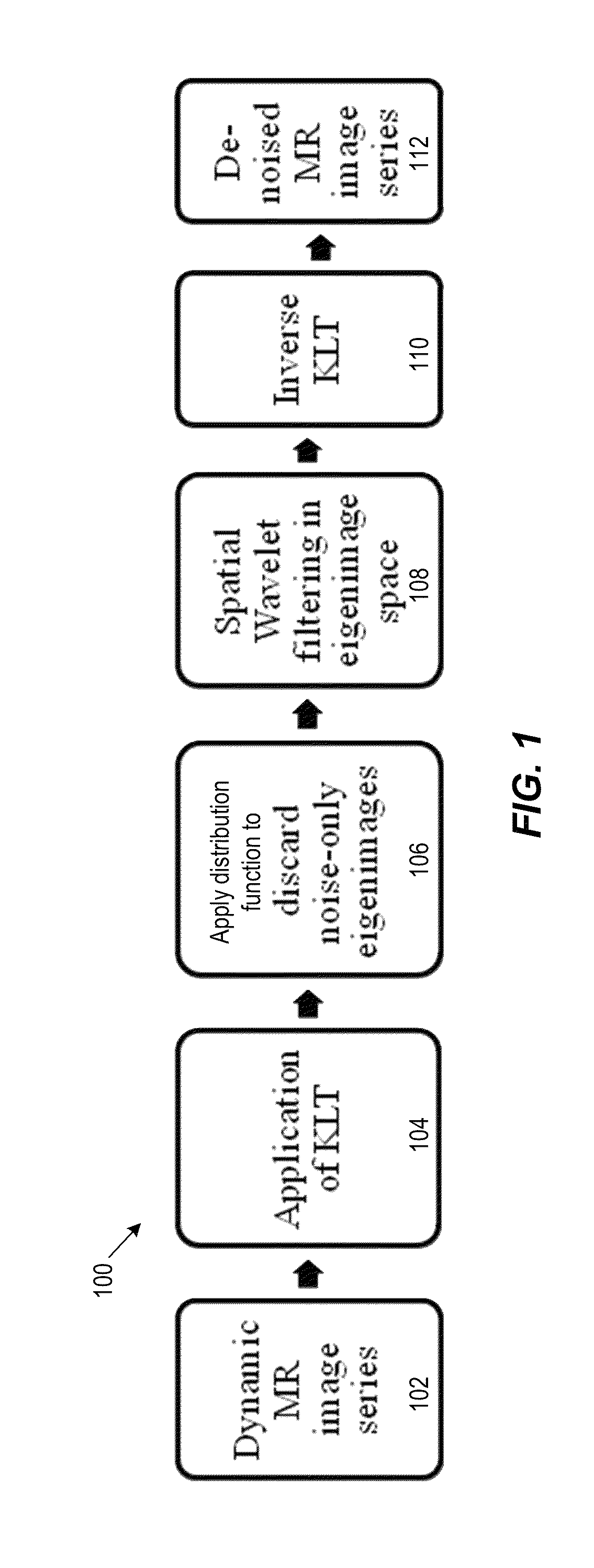De-noising of real-time dynamic magnetic resonance images by the combined application of karhunen-loeve transform (KLT) and wavelet filtering
a wavelet filtering technology, applied in the field of denoising real-time dynamic magnetic resonance images, can solve the problems of blurring edges and fine structures in mri images, affecting the quality and interpretation of clinically relevant data, and rt cardiac mr cine images are often corrupted by noise, so as to reduce image noise and suppress random noise , the effect of minimal loss in image sharpness
- Summary
- Abstract
- Description
- Claims
- Application Information
AI Technical Summary
Benefits of technology
Problems solved by technology
Method used
Image
Examples
Embodiment Construction
[0048]In accordance with certain implementations, de-noising RT cardiac cine images may be performed using a hybrid KW filtering technique that combines filtering in both spatial and temporal domains. The KW filter incorporates a combination of 1D KLT in the temporal domain and 2D Wavelet filtering in the spatial domain to provide higher performance than either of the individual filter components. As discussed above, filtering techniques for de-noising purposes can be applied in the spatial domain, the temporal domain or both, depending on the characteristics of the signal. Temporal filtering techniques such as Karhunen-Loeve Transform (KLT) may be applied to any image series that show a high degree of temporal correlation while spatial filtering techniques like Wavelet filtering and low pass Fourier filtering is applied to images that exhibit high spatial correlation. RT cardiac MR cine image series can exhibit high temporal correlation as well as high spatial correlation.
[0049]Wit...
PUM
 Login to View More
Login to View More Abstract
Description
Claims
Application Information
 Login to View More
Login to View More - R&D
- Intellectual Property
- Life Sciences
- Materials
- Tech Scout
- Unparalleled Data Quality
- Higher Quality Content
- 60% Fewer Hallucinations
Browse by: Latest US Patents, China's latest patents, Technical Efficacy Thesaurus, Application Domain, Technology Topic, Popular Technical Reports.
© 2025 PatSnap. All rights reserved.Legal|Privacy policy|Modern Slavery Act Transparency Statement|Sitemap|About US| Contact US: help@patsnap.com



